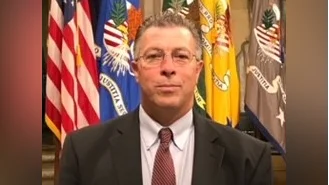Iowa State University issued the following announcement on Dec. 19
Researchers are developing machine learning tools to help them flip the design script and accelerate technology development.
They’re not interested in the traditional, incremental, costly way of running experiments, collecting data and applying those answers to technology designs. They want to start with the answer – in this case better solar cells – and use machine learning to scan existing data, learn patterns, make predictions and help them quickly reach their design goal.
Baskar Ganapathysubramanian
“Can I circumvent the need for expensive data collection by using knowledge that the domain already has?” asked Iowa State University’s Baskar Ganapathysubramanian, the Joseph C. and Elizabeth A. Anderlik Professor in Engineering and leader of a new effort to develop machine-learning for technology design.
The researchers believe the answer is yes.
A recent grant of up to $2 million over two years from the U.S. Department of Energy’s Advanced Research Projects Agency – Energy (ARPA-E) will support their exploration of that idea. The Iowa State-led project is one of 23 supported by up to $15 million from the research agency’s DIFFERENTIATE program dedicated to accelerating the search for energy innovations.
In addition to Ganapathysubramanian, the research team includes Adarsh Krishnamurthy, an Iowa State assistant professor of mechanical engineering; Soumik Sarkar, an Iowa State associate professor of mechanical engineering; Chinmay Hegde, formerly of Iowa State, now an assistant professor at New York University’s Tandon School of Engineering; Zhenan Bao, chair of chemical engineering and K. K. Lee Professor at Stanford University in California; Ross Larsen, a senior scientist at the National Renewable Energy Laboratory (NREL) in Colorado; and Bryon Larson, a researcher at NREL.
Ganapathysubramanian said the project’s immediate goal is to develop machine-learning theory and software tools that will allow rapid identification of organic thin film structures that enhance solar cell performance and are easy to manufacture. The broader goal is to demonstrate that machine learning can help rapidly design all kinds of technologies.
Soumik Sarkar
“We’re looking at a non-traditional way of doing machine learning – we’re doing science with machine learning,” said Sarkar, who studies machine learning and artificial intelligence. “Machine learning has been used to make your next Netflix recommendation. The new frontier is trying to see if machine learning can help engineers or scientists do engineering or science better.”
In this case, the basic idea is to use machine learning to help the researchers invert and expedite the design process, Ganapathysubramanian said.
Say you want to design cars that go 60 miles per gallon of gas. He said instead of the slow and expensive process of trying and testing one change at a time – better aerodynamics here, lighter materials there, new engine technology under the hood – the new process would use machine learning to analyze existing data as well as new computer models to come up with an initial design capable of hitting 60 miles per gallon.
Adarsh Krishnamurthy
Iowa State’s Krishnamurthy, who studies computer-aided design and 3-D modeling, said he’s worked with Sarkar on similar projects that have used machine learning to improve manufacturing. Specifically, they looked at how machine learning can generalize design-for-manufacturing rules to identify difficult-to-manufacture features in a complex part. This has accelerated the design process and helped identify manufacturing bottlenecks at the design stage.
Once the research team’s new machine learning tool has come up with designs for better solar cells, manufacturability and device performance will be tested by Bao’s research group at Stanford. Larsen and Larson at NREL will provide data on materials properties and also test materials performance.
While better solar cells are certainly a good thing, Ganapathysubramanian said that’s not the best thing that could come from this project.
“The most important outcomes are going to be theory and software tools that allow us to design new technologies in a fast and agile manner,” he said. “That’s the key outcome that ARPA-E expects.”
Original source can be found here.




 Alerts Sign-up
Alerts Sign-up